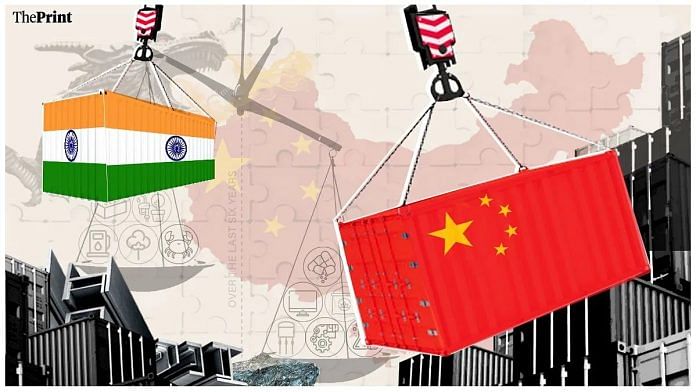In his book The Third Wave, published in 1980, Alvin Toffler described a transformative period in human history characterised by the transition from the industrial society (the Second Wave) to the information age or the post-industrial society (the Third Wave). This tectonic shift, as Toffler outlined, encompasses several key changes in society, economy and technology.
India is benefitting—after missing the second wave that was the result of the Industrial Revolution that introduced mass production, centralised industries and urbanisation—it is now riding the third wave. The third wave is the ‘Information Age’ marked by transition to a knowledge-based economy, decentralised production and advanced technologies.
India has emerged as the world’s ‘services factory’, driven by robust growth in its services exports, particularly in the IT and business process outsourcing (BPO) sectors. According to a report by Goldman Sachs, India’s services exports reached nearly $340 billion in 2023, with a compound annual growth rate (CAGR) of around 11 per cent since 2005. This growth rate is nearly double the global average and significantly outpaces the growth in goods
exports.
The country’s emergence as a global hub for services is further bolstered by its immense pool of skilled professionals, particularly in the technology sector. This ‘brainpower talent pool’ has been a significant factor in India’s ability to attract and retain global business. India produces over 1.5 million engineering graduates annually, making it one of the largest talent pools in the world.
Indian engineers and IT professionals are highly sought after for their expertise and innovation, contributing to the country’s reputation as a preferred destination for global companies seeking high-quality and cost-effective services.
Also read: How the East India Company picked Madras as a base. It all starts with a love story
Additionally, Global Capability Centres (GCCs) have played a crucial role in this transformation. India hosts more than 1,300 GCCs, which are offshore units that handle critical business functions such as R&D, IT support, customer service and financial management for multinational corporations. These centres have not only generated employment for millions of Indians but also enhanced India’s stature as a global services hub by providing sophisticated and high-value services.
Moreover, India’s strategic focus on digital services and remote working capabilities has positioned it to capitalise on the increasing global demand for these services. This transformation into a global services hub underscores India’s growing influence in the global economy and highlights its potential to drive future economic growth through its skilled workforce and competitive services sector.
Here are some key figures:
- Services exports in 2023: Nearly $340 billion
- CAGR since 2005: About 11%
- Number of GCCs in India: Over 1,300
- Engineering graduates produced annually: Over 1.5 million
This growth in services exports, the proliferation of GCCs and the large number of engineering graduates illustrate India’s dynamic shift towards becoming a powerhouse in the global services industry, leveraging its talented workforce and technological advancements to cater to global demands.
In 1980, both India and China were of the same economic size, but then China embraced reforms and grew rapidly, while India fumbled over its various political upheavals. In 1990, India’s per person income was $367 and China’s was $317. That was the last time we were ahead of that country.
In 2000, we were at $1,357 and China was at $4,450. In 2022, India was at $2,388 and China at $12,720. India’s liberalisation opened our doors to faster growth. But this growth could not keep pace with theirs. China grew at 11.7% in the 1990s (versus our 5.6%), then 16.5% in the 2000s (against our 6.5%) and then 8.8% in the 2010s (versus our 5.1%). (In 1995, China was ranked sixth largest in terms of GDP, and fifteen years later, by 2010, it had attained its place as the second highest. Currently, India is the fifth highest in GDP terms and it is vying to be the third largest economy in terms of GDP before 2030.)
However, now, India is at a point of inflexion where it can propel itself to high growth for a continuous period of a couple of decades to somewhat emulate what China managed in the three decades from 1980 to 2014, where it grew by nearly 10% per annum. But then, walking five steps and retreating three is not going to cut it. India needs a transformative approach. Ideas that would make a transformative change in outcomes.
If the country were to grow at a rate of 6% per annum for the next twenty-three years, it would achieve a GDP of $13 trillion. At 7%, the GDP would touch $15 trillion, and with an annual growth rate of 8%, it could touch $23.31 trillion. But to achieve a GDP of $30 trillion by 2047, the desirable GDP annual growth rate would have to be 9.19%.
The real question: Are we fine with GDP as the metric of measurement? Attaining a high GDP and its consequent per capita income does not guarantee that we would have provided equal opportunity to our citizens in education, health and infrastructure, i.e., social and physical infrastructure. Inequalities in society may continue and may even turn for the worse. Communal disturbances, civil disobediences, public outrage … all may be at flash point during this period and may cause an implosion.
 This excerpt from ‘Tarmac to Towers: The India Infrastructure Story’ by Pratap Padode has been published with permission from Westland Business.
This excerpt from ‘Tarmac to Towers: The India Infrastructure Story’ by Pratap Padode has been published with permission from Westland Business.





Aspirations ? Global power ? People are delusional if they think India will be a “Global power”. I like Modi but the whole visaguru bs is just preening for the crowd.
Anybody who knows anything about how governments and industrialization and economic policy works knows that India will be lucky if it reaches malaysia’s level of per capita income.
And even Malaysia is stuck in the middle income trap.